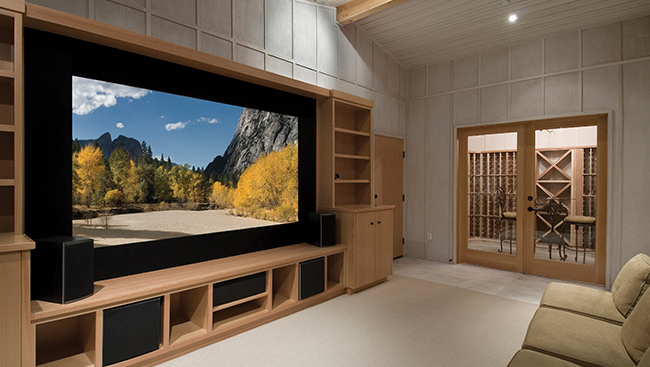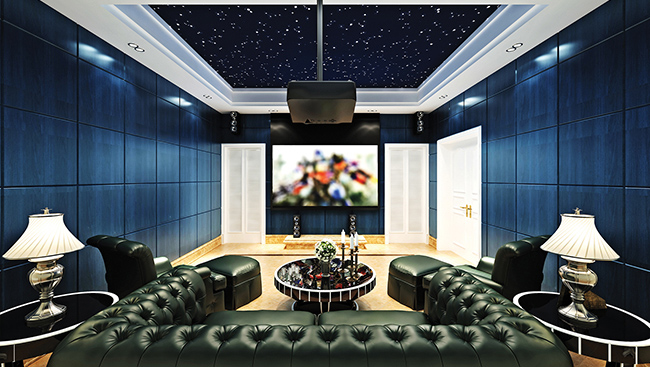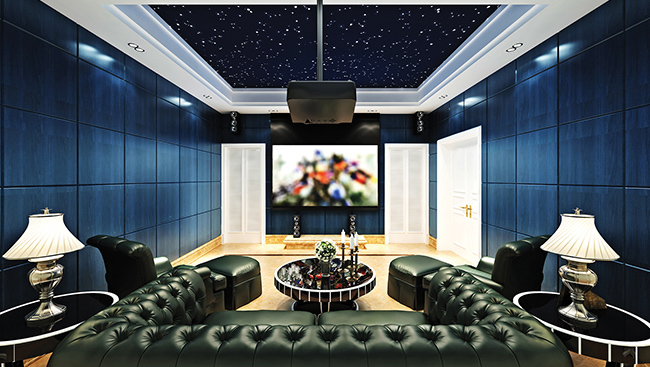Steps to build a perfect home theatre
If you are a cinephile, then a regular television screen can never replace the magic of watching films on the big screen for you. No matter how fancy your telly is, the fact is it won’t ever give you that theatre-like experience. So why not get that movie-theatre experience right into your home? Thanks to affordable technology, a ‘Home Theatre’ is no longer a luxury reserved only for the rich and the famous.
Building up a home theatre is an ideal choice for film aficionados, who don’t want to ever compromise on their ultimate cinema-viewing experience. And while there is a wide range of products available in the market to help build the perfect home cinema, the key to successfully setting up a home theatre is preparation and planning. So, let us walk you through a few fundamental steps that will help you build the ideal home theatre. Read on….
Fix a Budget
This is the first and foremost thing you need to do before you go about building a theatre in your house. Sit down and make a wish list of things and equipment you need to have and which ones you can make do without. Create a realistic budget first and then start purchasing your home theatre gears.

Choose the Ideal Room
Now that you have a general budget, it is time to pick up the right room for your home theatre. The dimensions and buildup of your room are pivotal for the desired cinema experience. So, whether it’s a dedicated space only for the home theatre or a spare bedroom that can double up as your cinema hall, there are a few things to consider. The dimension of the room should be at least 14 feet in length for the projector to spread a proper picture and to make sure that the viewer is not too close to the screen. The distance is important for long duration viewing experience as well. If not done right, it can make the viewer uncomfortable.
Keep the Light Out
Remember the latecomers entering the theatre just when you are watching an interesting scene in the cinema hall? Yes, we all know how annoying it is. Well, a light bleed in your home theatre room can be annoying too. It not only distracts your attention from the screen but if there is an outside light bleed in the room then it might disrupt your projected image as well. Selecting a room with minimum possible light can ease you with the fixings. If still there is a source of outside light that is entering your room, you can limit it with light-blocking curtains or dark shades. Outside light weakens the video projection and makes the flat screen viewing experience unpleasant. So, to enhance the video projection, cutting down on ambient light is of prime importance.

Home Cinema Lighting
Lighting is the crucial stage for achieving a perfect cinema-like experience. While it is important to have low lighting levels while viewing a film, you will also need some ambient lighting to move around your home theatre whenever you have to. Set up major light fixtures at the rear of the room and fit dimmers to make certain the light is just right and not overpowering the room. If there are no budget constraints, don’t hesitate to splurge on an intelligent lighting control system.

Sound Proofing and Acoustic
Someone speaking next to you in a cinema hall can disrupt your movie-watching experience; likewise outside sounds entering your home theatre can prove to be a major fall back. Hence soundproofing is essential for this purpose. Consider replacing you hallow doors with the solid ones to keep the noise out. No matter how simple it may look, the acoustic of the room can make for a best or worst movie-watching experience. Sound generally tends to bounce off barren walls and it can be very annoying when you are watching a film. Try to fix this by adding a layer of drywall to your regular one. You might not be a fan of carpets but you will just love the way floor and wall carpets work in your home theatre space.

Ideal Seating
While watching a movie for long hours, comfort is the foremost concern. Many a time it’s the seating or arrangement that makes one like or dislike a theatre. The seating will also play an important part in how easily you are able to focus on your screen. You can add your comfy sofas, bean bags or laid-back chairs, however, if you have the budget, then go for authentic cinema style seating. With a 20 by 14 theatre, you can easily add two rows with three to four seats per row. If you are considering rows, build a platform to elevate the second row to enhance the experience. Select the ones that suit you the best for a relaxed viewing experience.






